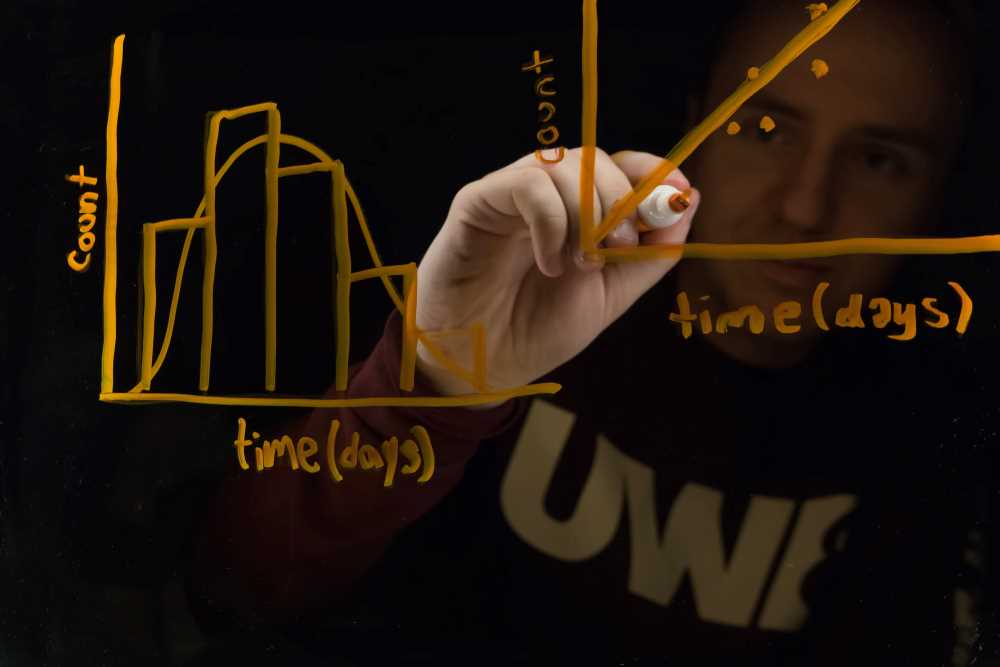Posted 10:13 a.m. Tuesday, May 14, 2024

Graduate students crunch numbers, secure victory in intense, 24-hour competition
UW-La Crosse statistics students engaged in a rigorous overnight challenge, tackling a complex problem posed by Minnesota's agriculture sector. Part of a prestigious data analysis competition among college students across the Midwest, they had only 24 hours to generate and deliver their answers to the Agricultural Utilization Research Institute and industry professionals.
Drawing on nearly 15 years of historical data, participants analyzed factors to understand why fertilizer demands have changed statewide. They explored crop pricing, planting trends, soil quality metrics, fertilizer usage, livestock demographics, and various logistical considerations like transportation networks and workforce availability. Additionally, they undertook the task of forecasting optimal locations for eco-friendly fertilizer production facilities, factoring in variables such as transportation costs, land values, and agricultural productivity.
Their participation in the Midwest Undergraduate Data Analytics Competition at Minnesota State University, Mankato, in April, resulted in insights about how to prioritize, work as a team, function on no sleep, and present data in a way that clients could understand.

Reflecting on the competition, UWL student Sidney Williams emphasized the challenge of managing time effectively amidst a deluge of tasks. “Throughout the competition, after realizing some tasks took longer than expected, we had to prioritize ones that we deemed more important for our final presentation since we were down to limited time remaining,” she says. “This process of frequently evaluating the importance of the tasks we were working on — in addition to functioning on little sleep — made this competition challenging.”
Another student, Toni Mortensen, recalls the challenge of trying to stay awake and alert at the point they needed to present the results.
“We had been up all night working on our code and presentation, and also had to be up early the morning before, so we were all very sleep deprived,” says Mortensen. “The part of the competition that pushed me the most was the very end of our work time before we had to turn in our final presentation. We were all concerned we were not going to finish and that we would not know what we were talking about due to the lack of rest that we had.”
Despite these challenges, the group clinched third place in the graduate division and secured the top spot among graduate competitors for precision accuracy. Jordan Persinger attributed their success to the rigorous training provided by UWL's Mathematics and Statistics Department, enabling them to compete on par with larger institutions.
“We were able to keep up with bigger schools such as the University of Minnesota and South Dakota State University in the overall scoring, and we even topped them for the prediction model category,” says Persinger.
UWL student Heidi Rogers underscored the importance of effective communication in presenting their findings. “Even if you have run some really interesting data analyses, it won't mean much if you aren't able to convey those findings in a digestible way,” says Rogers. “Overall, it was cool to see what types of visualizations worked well for this and what didn't as we were presenting to the judges.”
Simone Zautis navigated the hurdle of incomplete data, showcasing ingenuity in devising alternative methodologies to address those gaps.
“Since it had missing data, I needed to impute it; however, due to the nature of the data I wasn't able to impute it like I've learned in class. This was the most challenging part for me since I needed to write a function instead of using a built-in command,” says Zautis. “Additionally, I needed to be attentive to the output to ensure that it properly looped through the data. With the help of our advisor, I was able to understand how to properly structure the function.”
Advisors were only allowed to help the students for three, 15-minute sessions. UWL students’ advisor was David Elzinga, assistant professor of Mathematics & Statistics, who conducts research using mathematical models to answer biological questions. He says the competition underscores that impressive quality of students in the statistics program at UWL.
“UWL’s statistics students excel in their ability to integrate an abundance of data and produce practical, actionable insights,” he says. “Our students’ ability to competitively battle with, and at times, outperform research institutions with more than triple the number of students is a testimony to the hard work of the faculty, staff, and students in our department.”
About MUDAC
Throughout its history, MUDAC has provided thousands of students with the opportunity to solve complex data problems, sponsored by industry partners. This rigorous 24-hour, non-stop competition showcases academic talent, innovative thinking, and resilience.
